Abstract
Sixty eight neonates requiring total or supplemental parenteral nutrition in the first week of life were randomly allocated either Vamin 9 glucose (n = 34) or MB233G (n = 34) in a double blind trial. Twenty infants were withdrawn: four because they died before 5 days of age and 16 because the amino acids were required for less than the five days of the trial. The solutions were isocaloric (1.6 MJ/l, 380 kcal/l) and with the same nitrogen content (2.79 g/l) and were infused at rates and volumes determined by clinical staff on the basis on the infants, clinical condition and serum electrolyte biochemistry. There was an excess of deaths in the group treated with Vamin 9 glucose particularly related to babies weighing greater than or equal to 1000 g. Infants less than 1000 g receiving the Vamin 9 glucose preparation required amino acids for twice as long. There was no significant difference between the weight losses or head circumference during the study period. Plasma aminograms in the group receiving Vamin 9 glucose showed concentrations of phenylalanine, tyrosine, proline, serine, and aspartic acid to be significantly higher than the reference range. Multiple regression analysis suggested that phenylalanine was the primary abnormality. The intravenous amino acid preparation MB233G maintained the plasma aminogram of newborn infants within the reference range of normal newborn infants.
Full text
PDF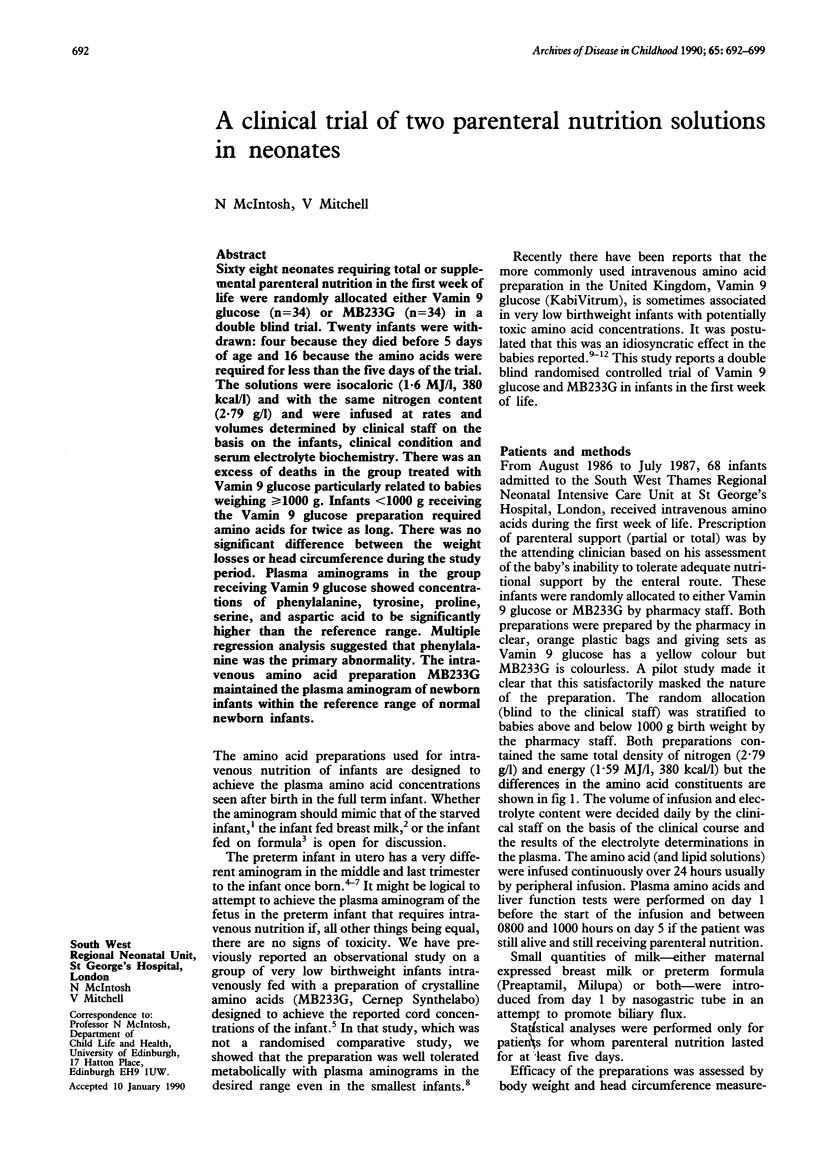
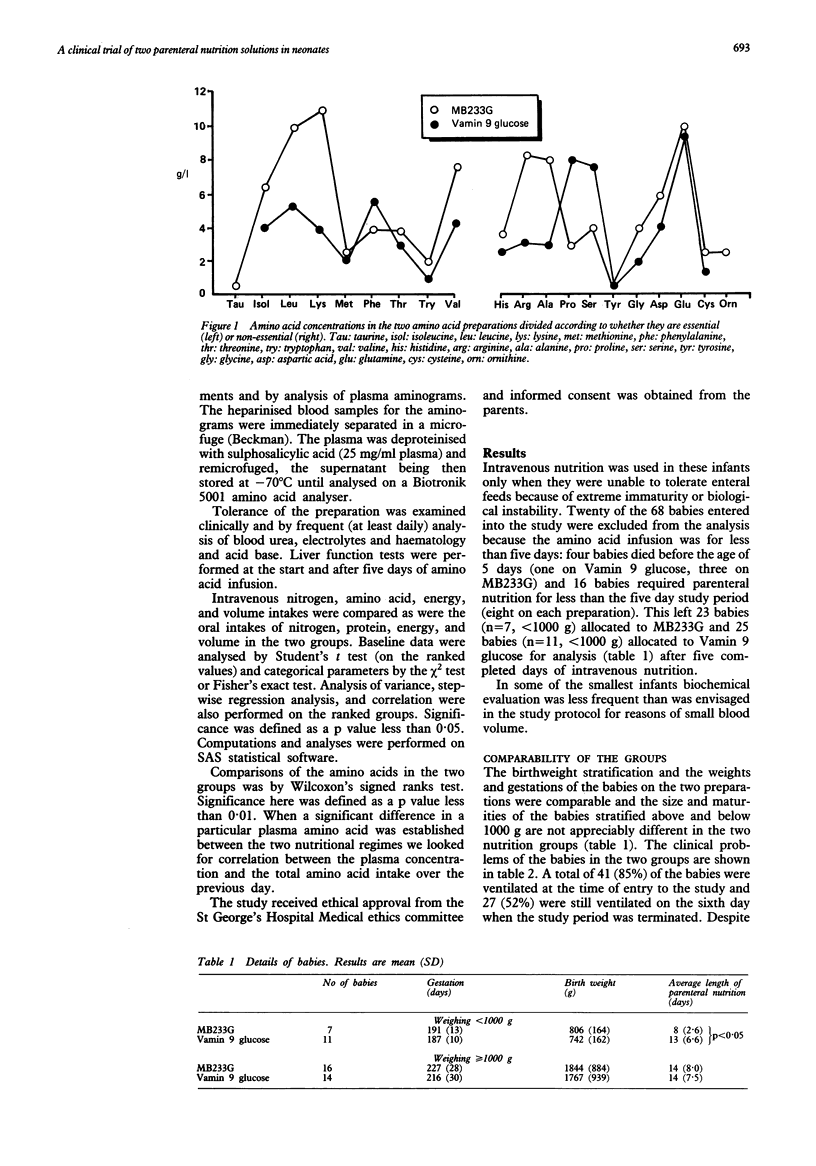

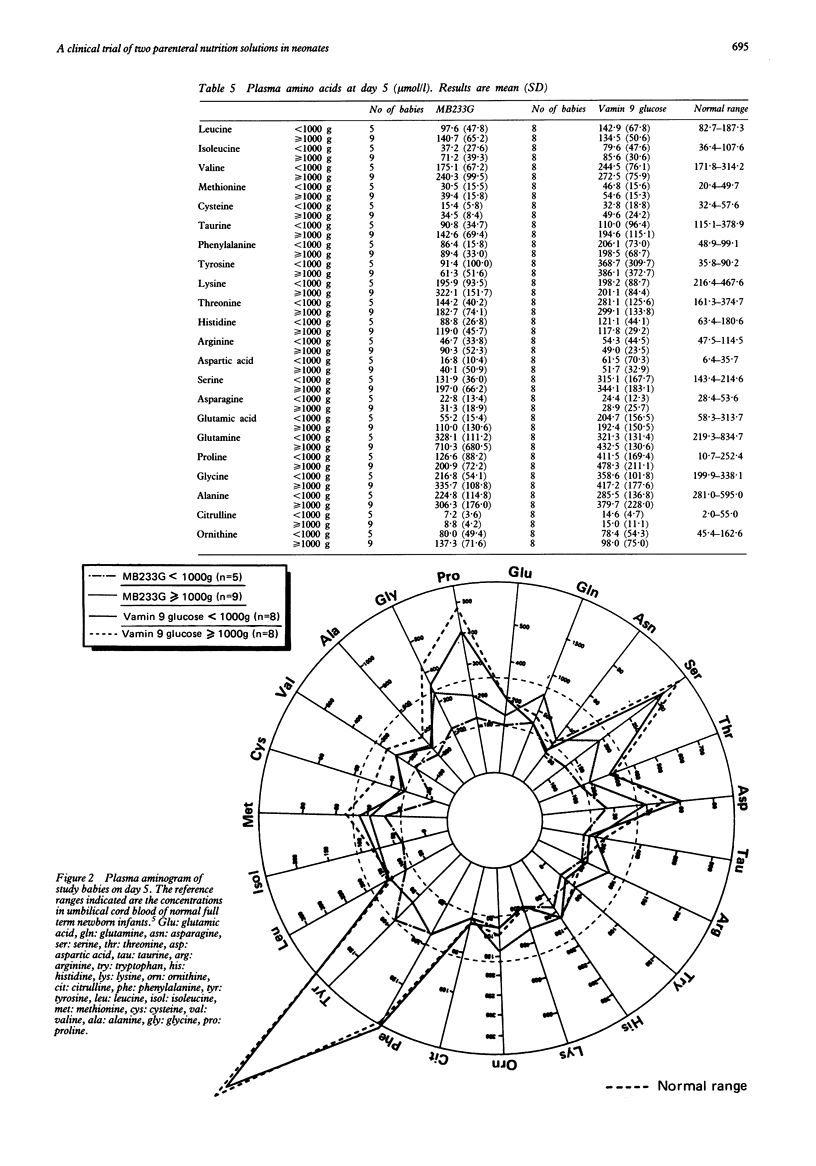
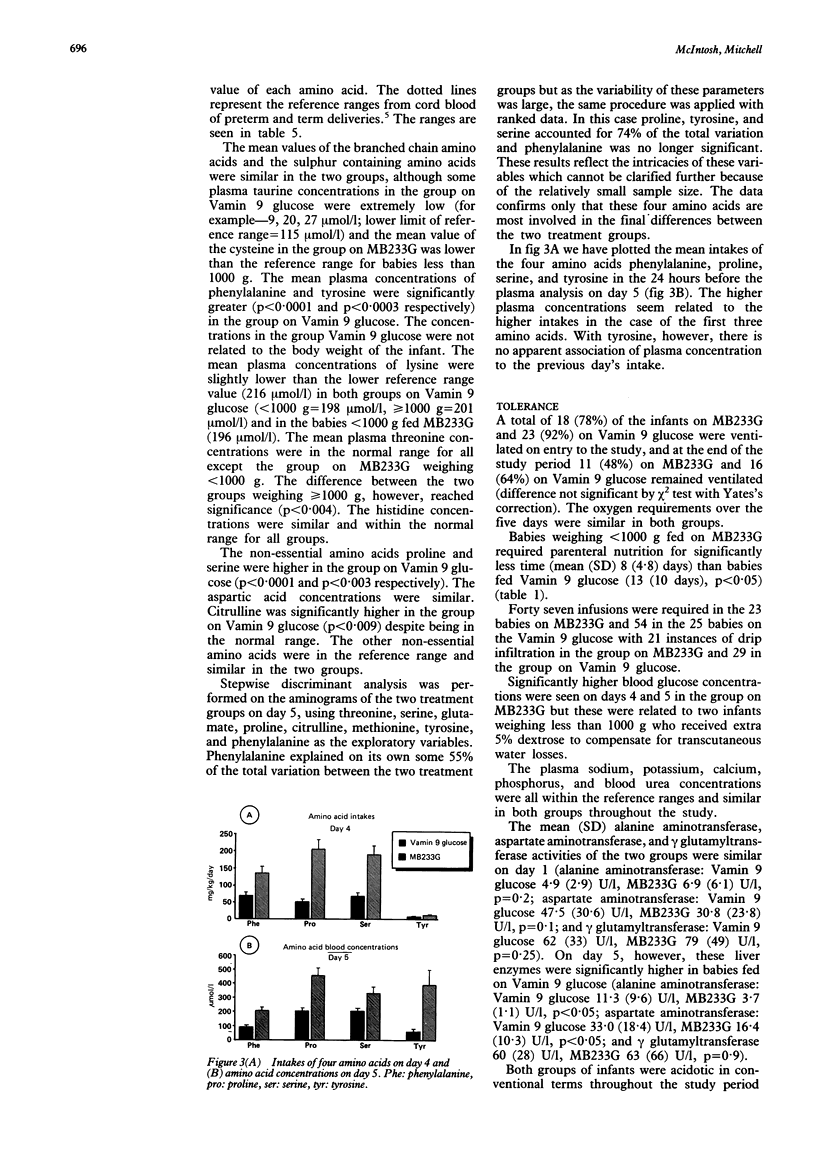
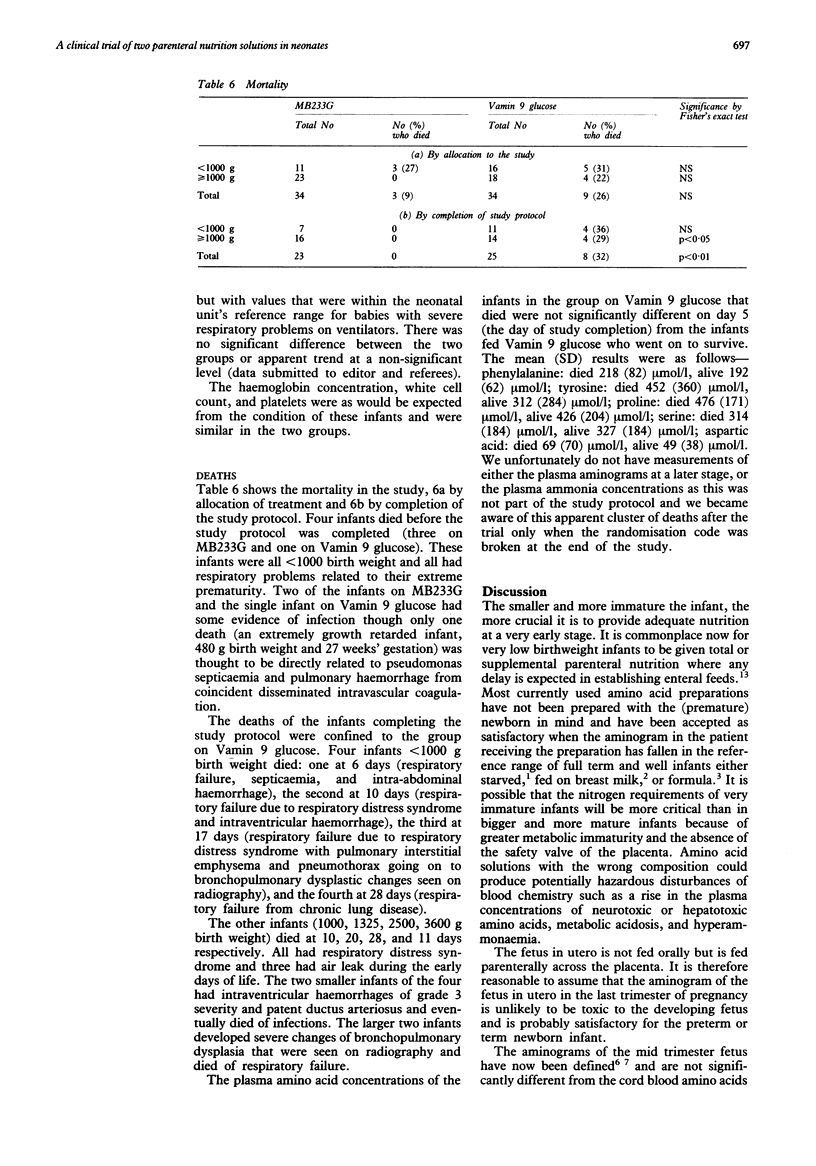
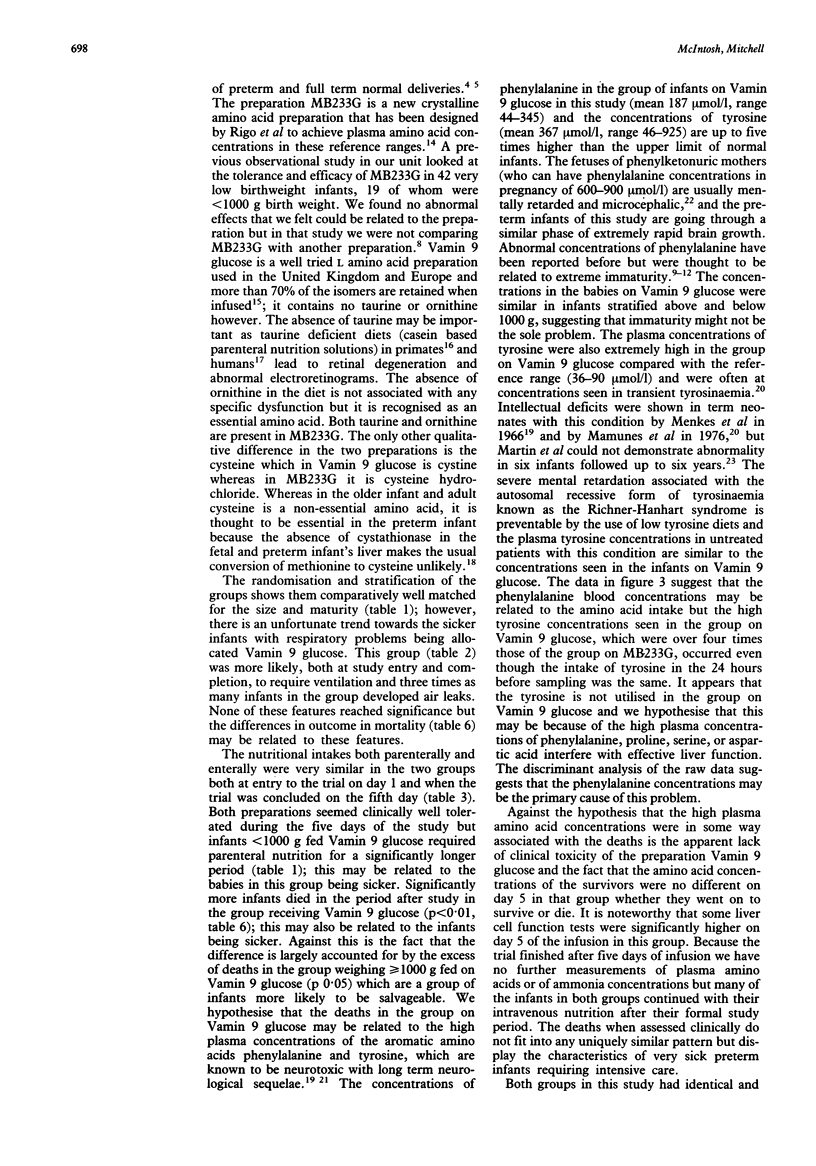
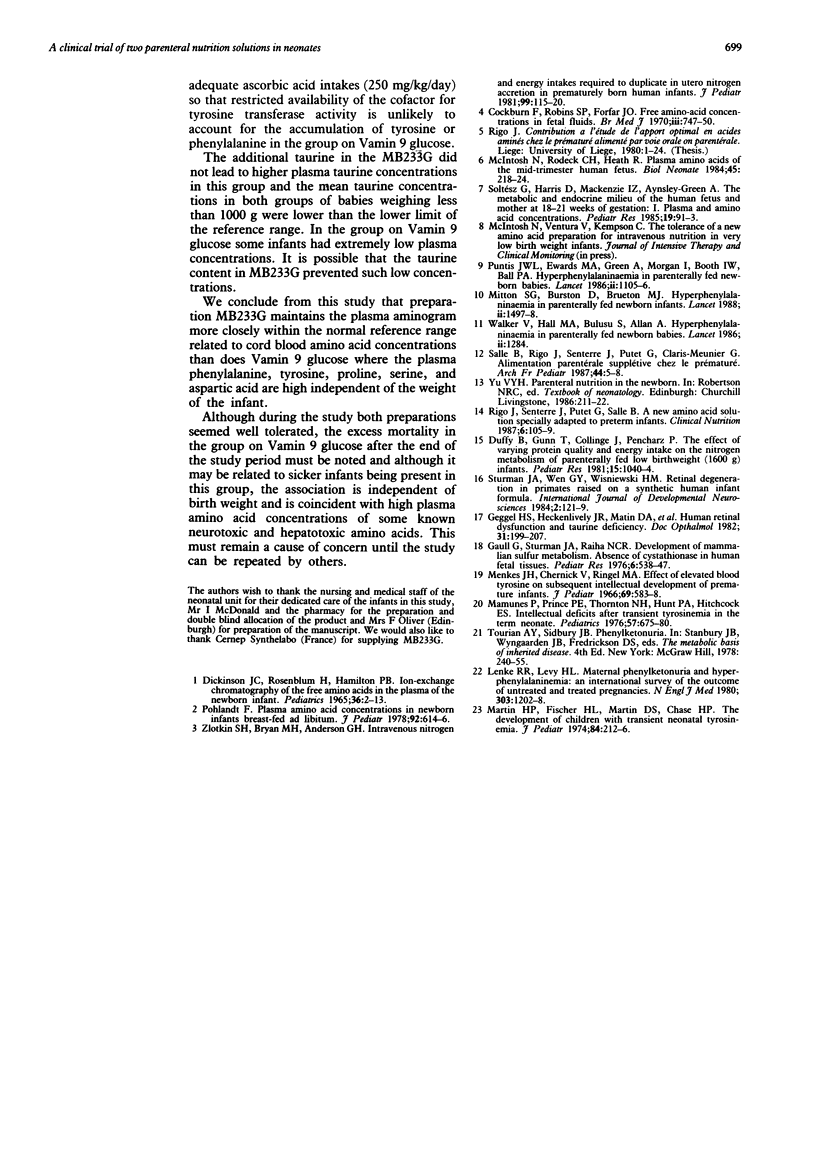
Selected References
These references are in PubMed. This may not be the complete list of references from this article.
- Cockburn F., Robins S. P., Forfar J. O. Free amino-acid concentrations in fetal fluids. Br Med J. 1970 Sep 26;3(5725):747–750. doi: 10.1136/bmj.3.5725.747. [DOI] [PMC free article] [PubMed] [Google Scholar]
- Duffy B., Gunn T., Collinge J., Pencharz P. The effect of varying protein quality and energy intake on the nitrogen metabolism of parenterally fed very low birthweight (less than 1600 g) infants. Pediatr Res. 1981 Jul;15(7):1040–1044. doi: 10.1203/00006450-198107000-00013. [DOI] [PubMed] [Google Scholar]
- Gaull G., Sturman J. A., Räihä N. C. Development of mammalian sulfur metabolism: absence of cystathionase in human fetal tissues. Pediatr Res. 1972 Jun;6(6):538–547. doi: 10.1203/00006450-197206000-00002. [DOI] [PubMed] [Google Scholar]
- Lenke R. R., Levy H. L. Maternal phenylketonuria and hyperphenylalaninemia. An international survey of the outcome of untreated and treated pregnancies. N Engl J Med. 1980 Nov 20;303(21):1202–1208. doi: 10.1056/NEJM198011203032104. [DOI] [PubMed] [Google Scholar]
- Mamunes P., Prince P. E., Thornton N. H., Hunt P. A., Hitchcock E. S. Intellectual deficits after transient tyrosinemia in the term neonate. Pediatrics. 1976 May;57(5):675–680. [PubMed] [Google Scholar]
- Martin H. P., Fischer H. L., Martin D. S., Chase H. P. The development of children with transient neonatal tyrosinemia. J Pediatr. 1974 Feb;84(2):212–216. doi: 10.1016/s0022-3476(74)80604-9. [DOI] [PubMed] [Google Scholar]
- McIntosh N., Rodeck C. H., Heath R. Plasma amino acids of the mid-trimester human fetus. Biol Neonate. 1984;45(5):218–224. doi: 10.1159/000242007. [DOI] [PubMed] [Google Scholar]
- Miller W. L. Recombinant DNA and the pediatrician. J Pediatr. 1981 Jul;99(1):1–15. doi: 10.1016/s0022-3476(81)80950-x. [DOI] [PubMed] [Google Scholar]
- Salle B., Rigo J., Senterre J., Putet G., Claris-Meunier G. Alimentation parentérale supplétive chez le prématuré. Adaptation de l'apport en acides aminés. Arch Fr Pediatr. 1987 Jan;44(1):5–8. [PubMed] [Google Scholar]
- Soltesz G., Harris D., Mackenzie I. Z., Aynsley-Green A. The metabolic and endocrine milieu of the human fetus and mother at 18-21 weeks of gestation. I. Plasma amino acid concentrations. Pediatr Res. 1985 Jan;19(1):91–93. doi: 10.1203/00006450-198501000-00024. [DOI] [PubMed] [Google Scholar]
- Walker V., Hall M. A., Bulusu S., Allan A. Hyperphenylalaninaemia in parenterally fed newborn babies. Lancet. 1986 Nov 29;2(8518):1284–1284. doi: 10.1016/s0140-6736(86)92715-7. [DOI] [PubMed] [Google Scholar]


